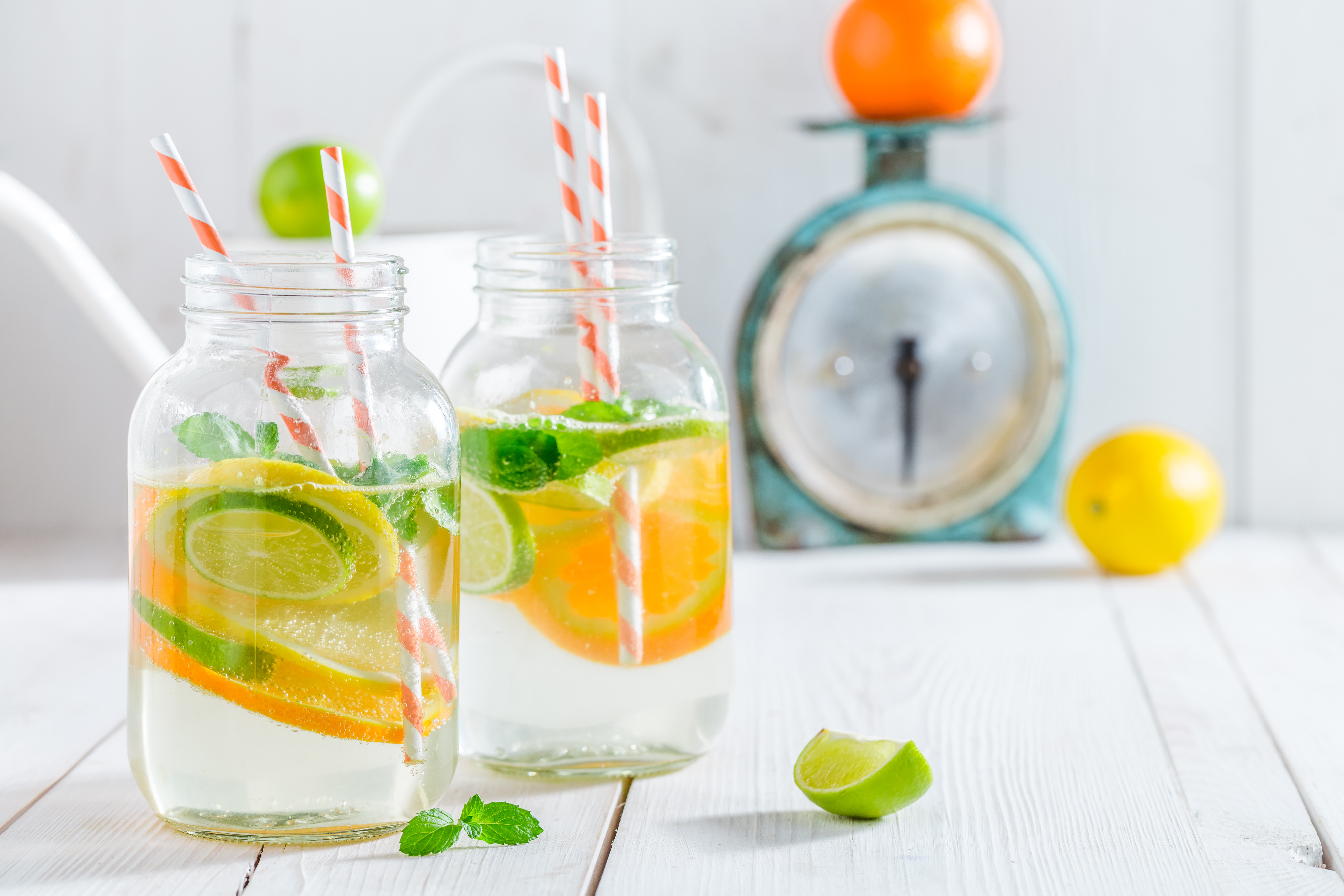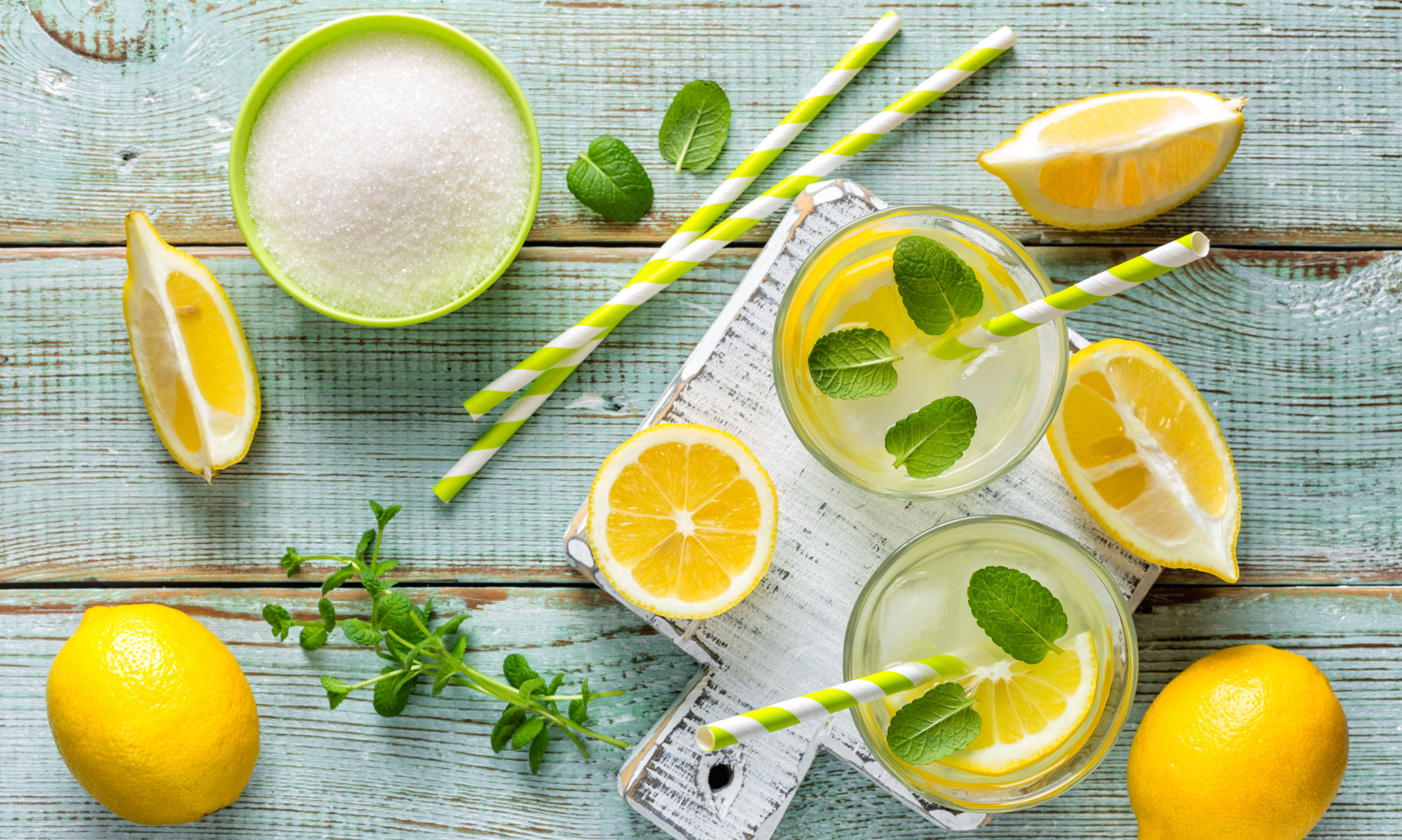
Hydration is something we think about often during the hot summer months when we’re noticeably thirsty and sweaty, but as the temperature starts to drop from fall into winter, we’re less likely to hydrate as much as we should. Dehydration, which can lead to constipation, kidney stones, and mood changes, is a concern all year long but may be less on our minds during the cooler months.
The Institute of Medicine recommendation for daily total water intake, which includes beverages and food, is 2.7 liters (91 ounces) for women and 3.7 liters (125 ounces) for men.1 According to a 2013 study, U.S. adults drank an average of 39 ounces of water daily – 60 to 70 percent less than what is recommended.2
Clearly, we need to be doing a better job at hydrating ourselves, no matter what the season. Here are five ways to stay hydrated all year long.
Keep it front and center.
Whether you carry around a reusable water bottle or you keep your favorite cup on your desk, make sure it’s constantly filled and easy to drink from. Some people find they drink more from a straw than an open top or a sport cap bottle – find what works for you and stick with it.
All beverages count and so does food.
Many people think only plain water counts toward daily water intake, but that’s not the case. Juice, coffee or tea, beer or wine, or a diet soda all increase your water intake. Based on the current evidence, caffeinated and alcoholic beverage consumption contribute to fluid intake and do not increase appreciable fluid loss.
However, it’s important to consider the calories that beverages contribute to your dietary intake. Fluid intake can contribute a wide range of calories to your intake. For example, plain or carbonated water contribute zero calories while an 8 oz serving of a full calorie beverage can exceed 100 calories.
Food also adds to daily water intake, with water-rich fruits and vegetables contributing the most. Tomatoes, watermelon, cucumbers, strawberries, and broccoli are all at least 90 percent water by weight. Sounds like the makings of a hydrating salad! Soup is also a great way to boost your fluid intake and stay warm during colder months.
Make it taste good.
Plain water is the purest, most natural form of hydration, but it’s not so easy to drink nearly 100 ounces – about 12 cups – of water every single day. Luckily there are many delicious ways to boost the flavor of our drinks without adding calories and sugar. Try adding sliced cucumbers, limes, or the tops of strawberries to your glass of water. You can even get a water bottle with an infuser to take your “spa water” (as I like to call it) on the go. Or add a drop or two of a liquid water enhancer for a flavor boost. Look for ones made with low- and no-calorie sweeteners like stevia.
Keep it room temperature.
One of the reasons so many people reduce their water intake in the fall and winter is the cold temperatures. You’re not looking to quench your thirst as much when it’s snowing out and an ice cold drink is the last thing you want when you need to warm up. To help with this problem, keep your water bottle at room temperature and rely on warm beverages like coffee and tea to increase your fluid intake and stay warm. Just be mindful what you add to those hot beverages and stick with low-fat dairy and low- or no-calorie sweeteners to keep calories and added sugar in check.
Enjoy your favorite beverages.
No matter what season it is, there’s no reason not to drink what you love. Even higher calorie beverages can be part of a healthy, balanced, and well-hydrated diet, as long as you take some measures to make them healthier. For example, start your morning with a protein-rich drink like this Blueberry Pomegranate Smoothie and this winter warm up with a cup of Cinnamon Hot Chocolate made with low-fat milk, unsweetened cocoa, and a stevia sweetener.
 Jessica Levinson, MS, RDN, CDN is a registered dietitian nutritionist and culinary nutrition expert. She has extensive experience as a recipe developer, writer, editor, and speaker. She is the co-author of We Can Cook: Introduce Your Child to the Joy of Cooking with 75 Simple Recipes and Activities (Barron’s, 2011), past columnist for the Culinary Corner column in Today’s Dietitian Magazine, and maintains a popular blog at JessicaLevinson.com. Jessica is an active member of the Academy of Nutrition and Dietetics (AND) and various Dietetic Practice Groups of the AND, including Nutrition Entrepreneurs, Food and Culinary Professionals, and Dietitians in Business and Communications. Follow her out on Twitter, Facebook, Instagram, and Pinterest.
Jessica Levinson, MS, RDN, CDN is a registered dietitian nutritionist and culinary nutrition expert. She has extensive experience as a recipe developer, writer, editor, and speaker. She is the co-author of We Can Cook: Introduce Your Child to the Joy of Cooking with 75 Simple Recipes and Activities (Barron’s, 2011), past columnist for the Culinary Corner column in Today’s Dietitian Magazine, and maintains a popular blog at JessicaLevinson.com. Jessica is an active member of the Academy of Nutrition and Dietetics (AND) and various Dietetic Practice Groups of the AND, including Nutrition Entrepreneurs, Food and Culinary Professionals, and Dietitians in Business and Communications. Follow her out on Twitter, Facebook, Instagram, and Pinterest.


